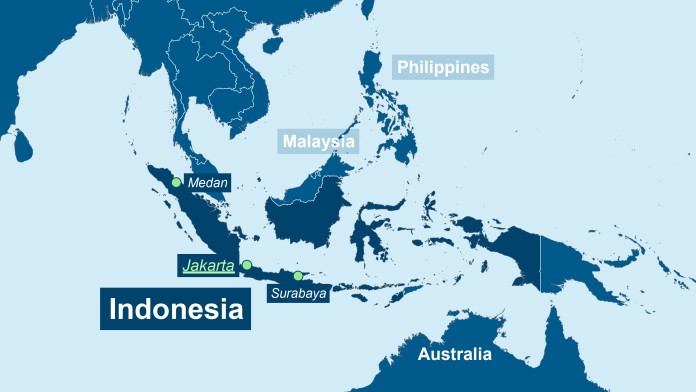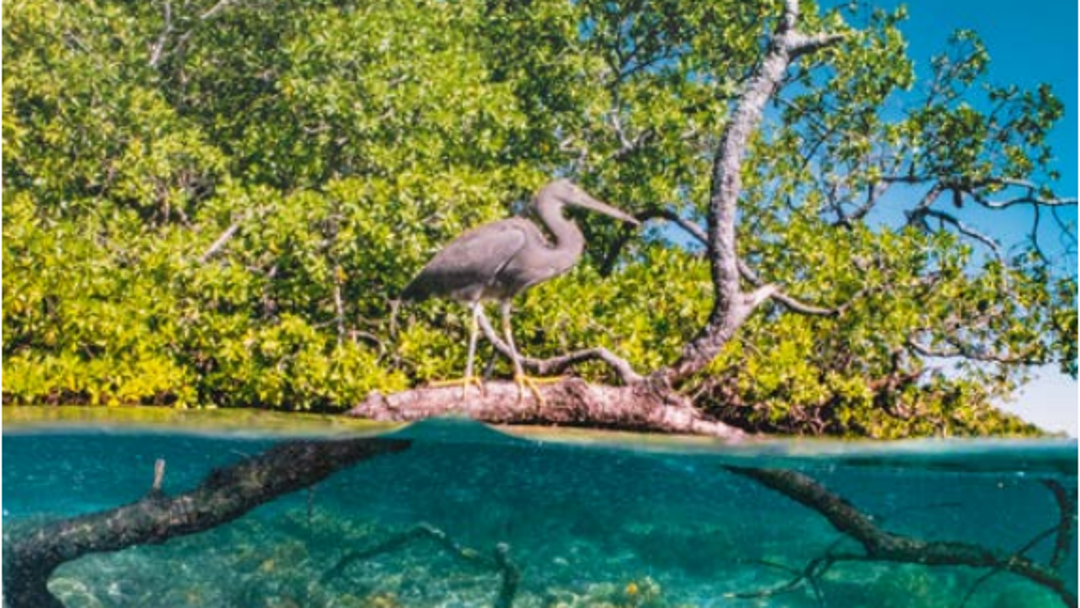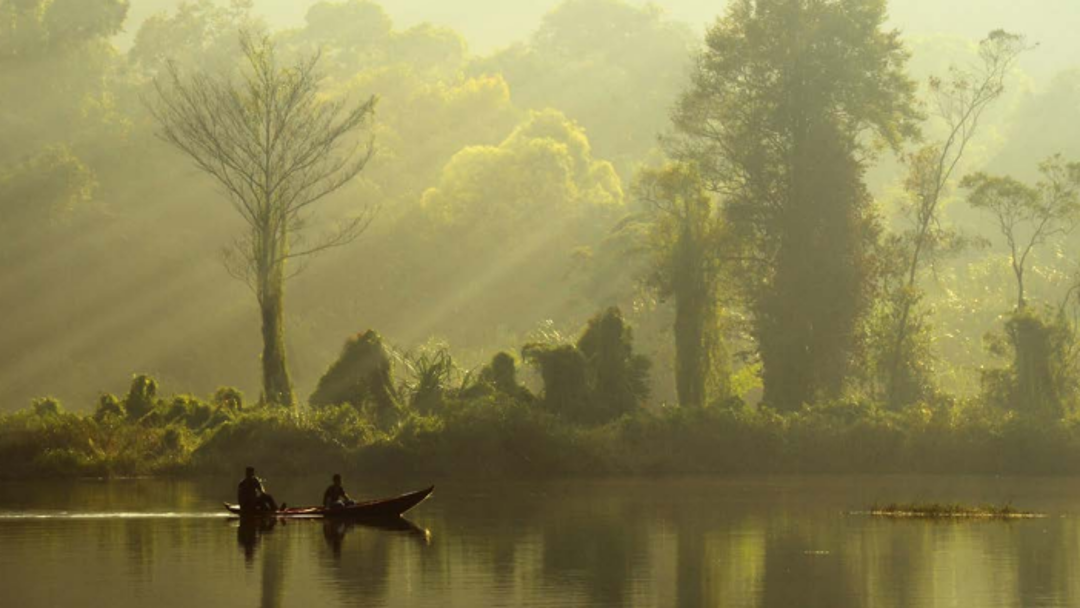
As of: 09/2022
With its 13,000 islands, Indonesia is one of the regions that will be most affected by the effects of climate change. Rising sea level and the increase in cyclones and heat waves threaten the country. The more than 270 million inhabitants are confronted with extreme weather events, water shortages and a loss of land. Indonesia itself is one of the biggest emitters of greenhouse gases in the world. Mangrove forests on the coasts of the Indonesian islands make an important contribution to storing carbon dioxide. However, they are in a state of dramatic decline. The government has decided to halt this loss. On behalf of the German Federal Government, KfW is supporting the country in protecting its natural resources with several forest programmes. One of these aims to preserve and restore mangrove forests.
Mangrove forests create a complex ecosystem that is perfectly adapted to life between salt water and fresh water. Almost 70 types of trees and shrubs form the mangrove forest, which grows along coastlines and in river deltas of tropical regions. This diverse community of species offers suitable areas to fish, prawns and crayfish for spawning and rearing young animals. Mangrove forests also protect the coasts from hurricanes and flooding. They are gigantic carbon sinks as well, absorbing five to ten times more greenhouse gases per hectare than the comparable area of rainforest.
The largest area of mangrove forests in the world can be found in Indonesia, where close to 3.6 million hectares still currently exist. Between 1980 and 2005, the total hectares of forest shrank by a third. Of the remaining areas, two thirds are in moderate to good condition from an ecological point of view, while one third are degraded. The remaining mangrove forests are increasingly being destroyed, especially by the rigorous spread of aquaculture. These farms for prawn and edible fish are frequently abandoned after just three years if the water is polluted by overfertilisation. In addition to aquaculture, illegal logging, the transformation of land into oil palm plantations, general marine pollution and mining in coastal areas all threaten Indonesia’s valuable coastal forests.

On behalf of the Federal Ministry for Economic Cooperation and Development (BMZ), KfW is providing EUR 20 million to support Indonesia in protecting the mangrove forests and thus achieving its ambitious plan to rehabilitate more than 630,000 hectares of degraded mangrove forests by 2024. The aim of the project is to ensure that forest authorities and municipalities sustainably manage this precious ecosystem. In addition to Berau in East Kalimantan, the sites also include Karang Gading, the Mahakam Delta and Sorong, including Sorong City (West Papua).
The project promotes new planting techniques, but also further training on the sustainable management of mangroves. Income-generating measures that benefit the local population are also supported. For example, they learn how to prepare, appealingly package and market seafood. In this way, the project contributes to raising income and thus the standard of living of the residents. Other projects, such as Forest Programme I, which has already been running for some time, also show that measures like these have an impact. In East Kalimantan, the participating families collectively generated the equivalent of 6,000 euros in 2020 from the sale of sustainably produced crabs, prawns and fish products. From 2018 to 2021, 140,000 seedlings from mangrove trees were planted there.
The aim is for Indonesia to incorporate the findings from the project into national guidelines for the management of mangroves. In addition, the project promotes the establishment of a World Mangrove Center (WMC), which is to become a global cooperation centre for mangrove research.

The livelihoods of local residents, who often work in fisheries and agriculture, are expected to improve. More than 34,000 people – including indigenous communities in around 30 villages – profit directly from the project. This is particularly the case for women, who are at the heart of the project activities. Forest management staff also receive better training and adequate equipment, enabling them to perform their tasks more efficiently. The deforestation rate is expected to have fallen by 20 to 30% by the end of the project in 2028 in comparison with a scenario without these measures in place. This is intended to reduce the impact of climate change on the Indonesian coast. The nearby villages are then better protected against flooding, landslides and erosion.
The project contributes to the achievement of these following United Nations Sustainable Development Goals:
KfW Group
KfW Development Bank
+62-21-2358-7431
Share page
To share the content of this page with your network, click on one of the icons below.
Note on data protection: When you share content, your personal data is transferred to the selected network.
Data protection
Alternatively, you can also copy the short link: https://www.kfw-entwicklungsbank.de/s/enzBYy3T
Copy link Link copied